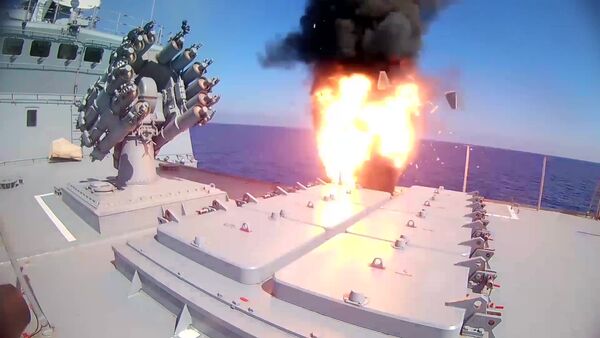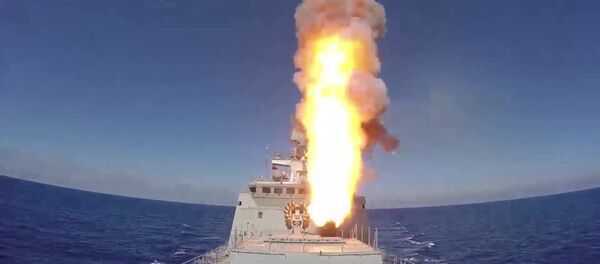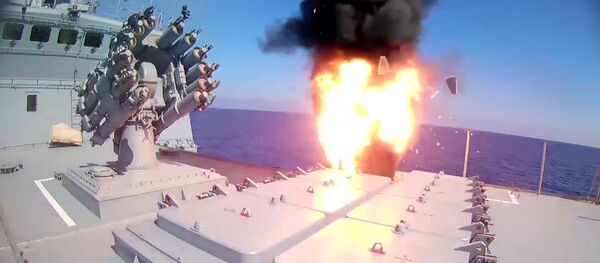"The number of missiles and their distribution, two on a ship and two on a submarine, indicate that this was likely a 'combat training launch.' In other words, Russian servicemen were testing these weapons, but they used the opportunity to employ these armaments in combat against a specific target," President of the Academy of Geopolitical Studies Konstantin Sivkov said.
On Tuesday, the Admiral Essen frigate and the Project 636 Varshavyanka submarine Krasnodar launched four Kalibr cruise missiles from the eastern Mediterranean, hitting all intended targets to the east of Palmyra. The Russian Ministry of Defense announced that the Russian Navy destroyed Daesh hideouts, housing heavy military equipment. An unconfirmed number of militants were eliminated in the successful operation.
"All targets have been hit. The Krasnodar submarine was submerged during the launch. Senior defense officials in the United States, Turkey and Israel were informed of the cruise missile launch through existing cooperation channels in a prompt manner," the Russian Defense Ministry said in a statement.
Colonel General Leonid Ivashov, the former head of the main department of international military cooperation of the Russian Defense Ministry, pointed out that the campaign in Syria has allowed the Russian Armed Forces to improve their combat capabilities.
"The most efficient method entails carrying out combat operations against a real enemy instead of launching airstrikes against familiar stationary targets at a testing range. One could say that the operation in Syria has provided [the Russian military] with such an opportunity," he said. "In addition such missions help improve combat characteristics of the missiles."
Never miss a story again — sign up to our Telegram channel and we'll keep you up to speed!



